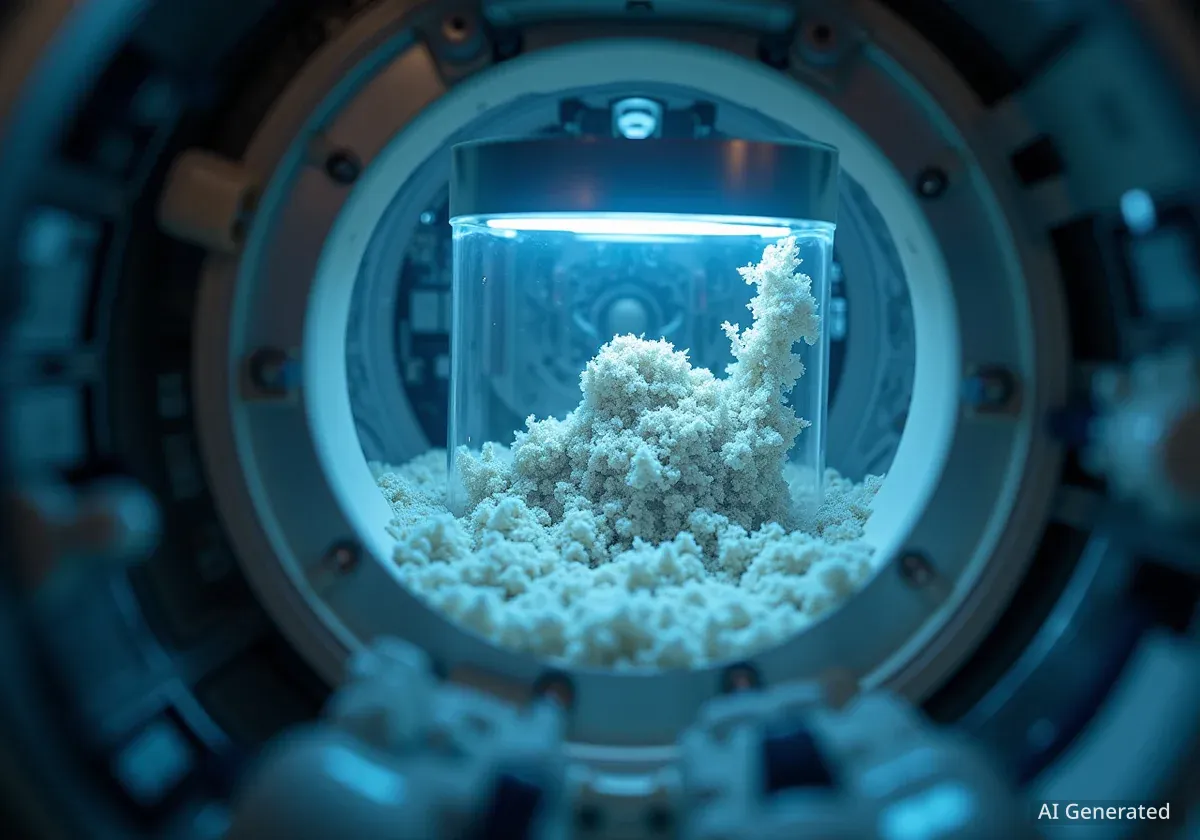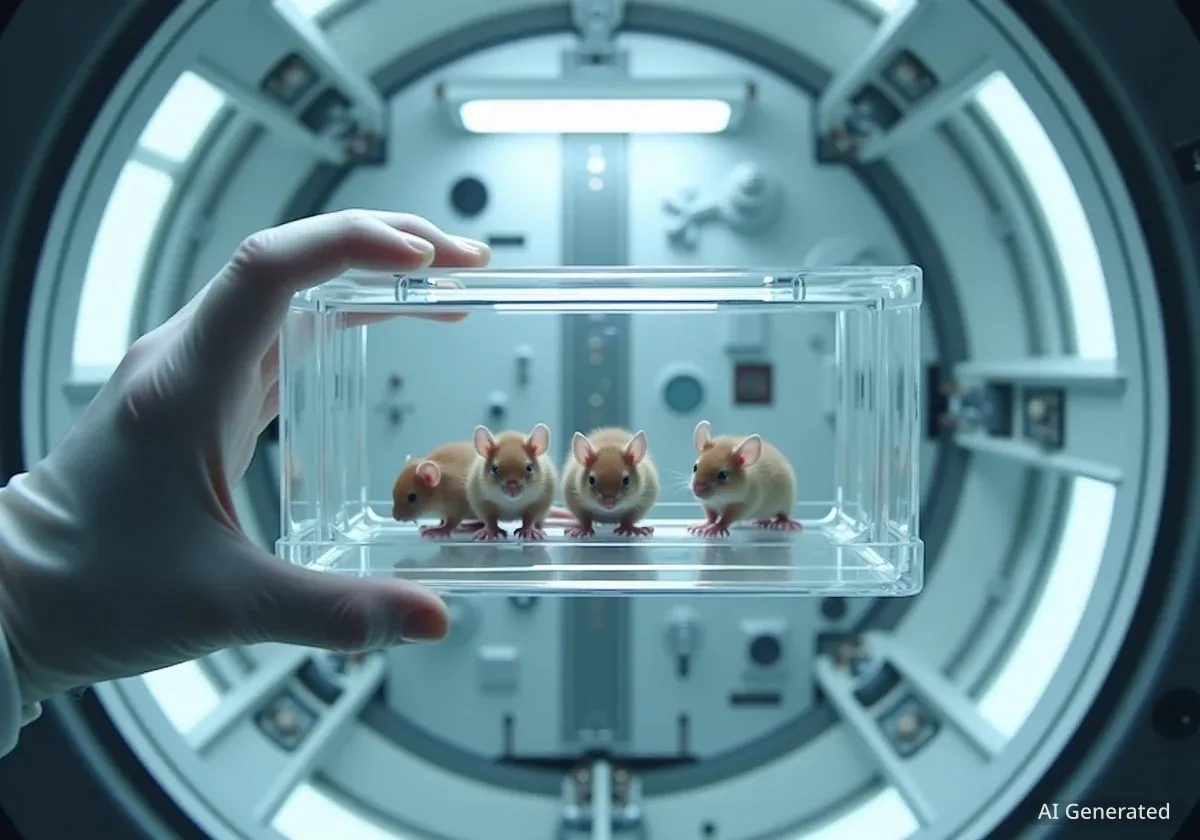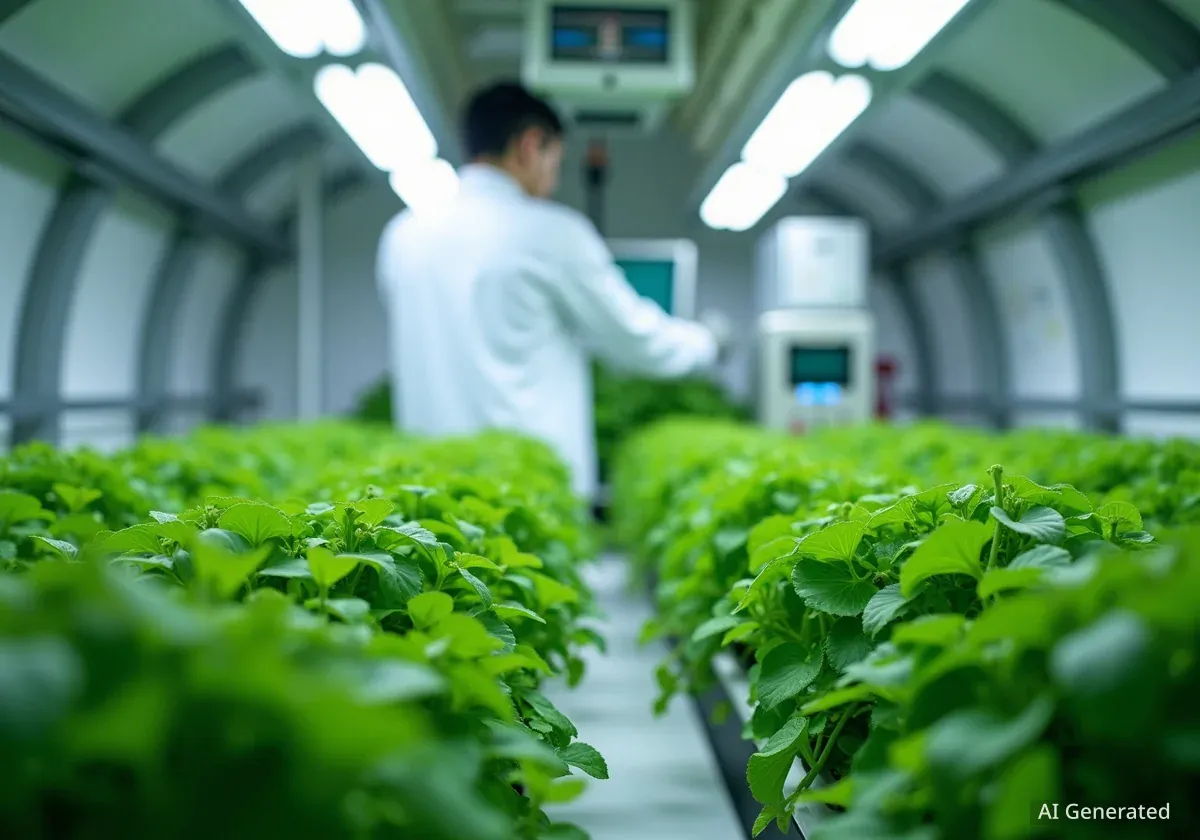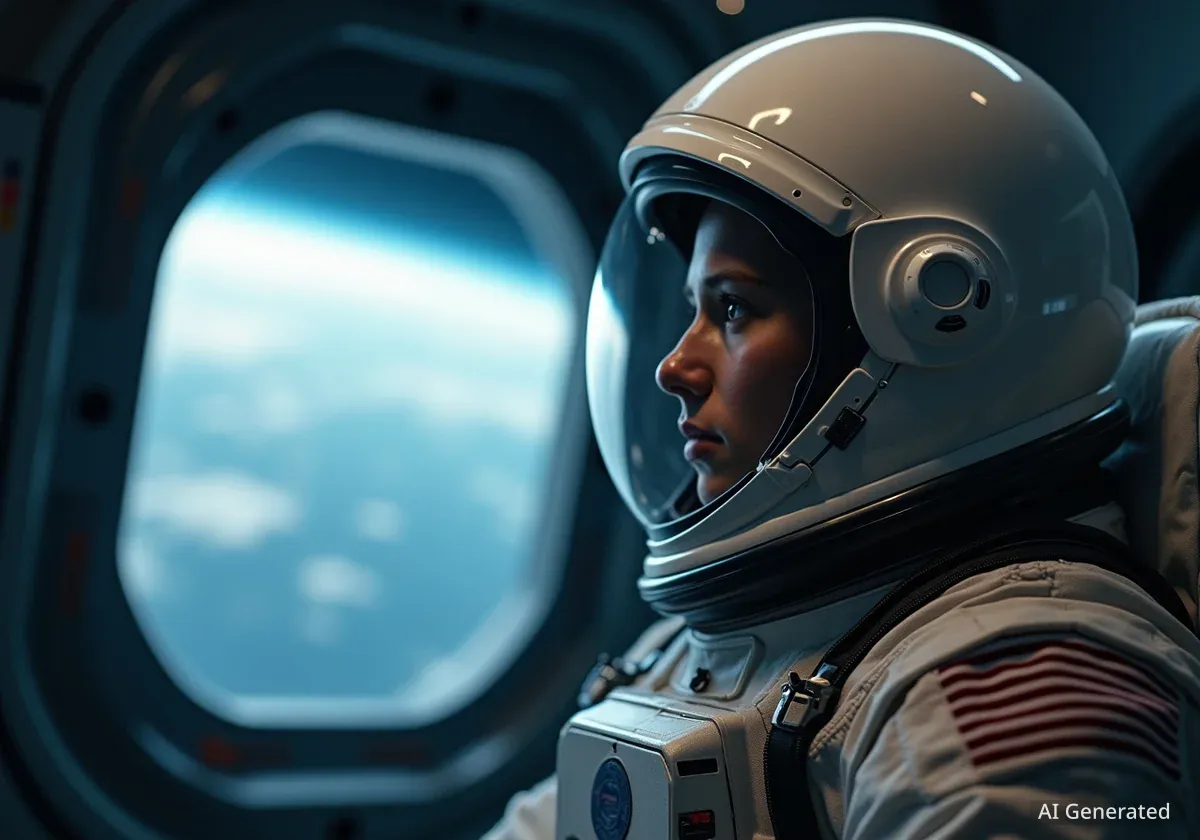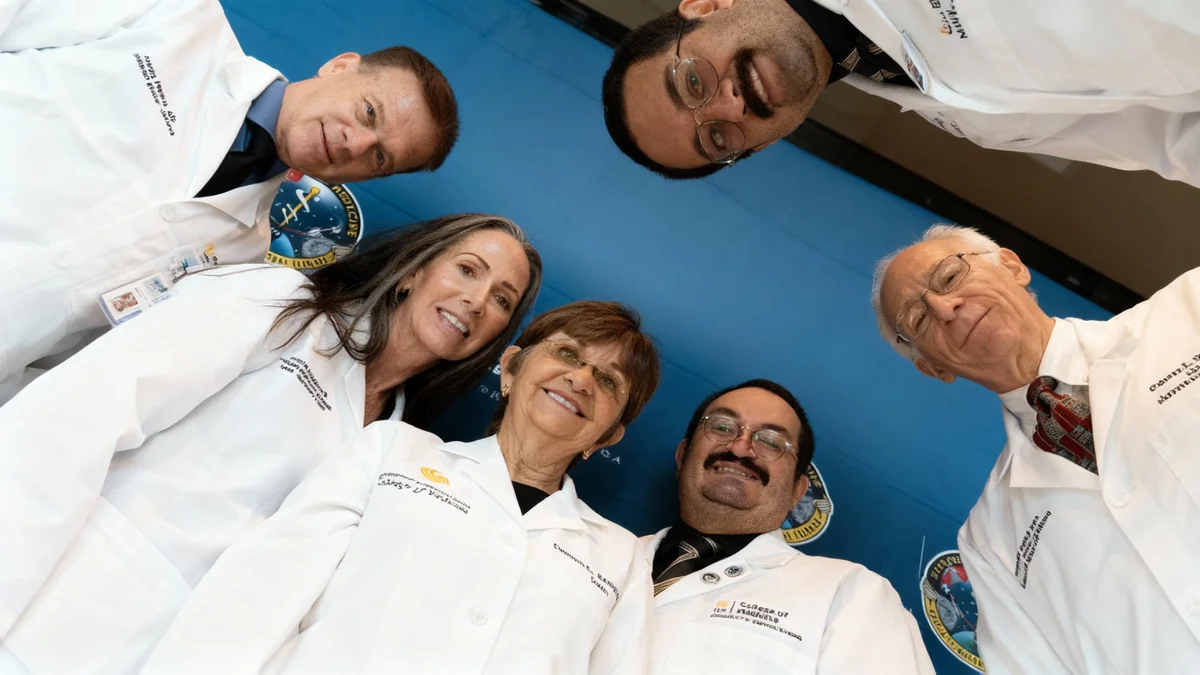A research team led by Arizona State University is testing a novel ultraviolet light technology aboard the International Space Station (ISS) to combat biofilms. These resilient bacterial communities cause an estimated $4 trillion in damage annually on Earth by corroding pipes, contaminating medical devices, and increasing energy costs.
The experiment, known as the Germicidal Ultraviolet Light Biofilm Inhibition (GULBI) project, aims to provide a safer, non-chemical solution for controlling microbial growth in water systems, a critical challenge for both long-duration space missions and terrestrial industries.
Key Takeaways
- An ASU-led team sent an experiment to the ISS to test UV-C light for preventing biofilm growth in microgravity.
- Biofilms cause an estimated $4 trillion in economic damage on Earth each year from corrosion, contamination, and energy loss.
- The technology uses special side-emitting optical fibers to deliver germicidal UV-C light, disrupting bacterial DNA.
- This method could reduce the need for costly chemical disinfectants in space and offer a safer alternative for industries on Earth.
The High Cost of Microbial Slime
Biofilms are organized communities of bacteria that adhere to surfaces and create a protective, slimy layer. While the film on teeth before brushing is a common example, these structures pose significant threats in industrial and medical settings.
"On Earth, biofilms cause an estimated $4 trillion in damage every year because they corrode metals, promote mold on surfaces, harbor harmful pathogens in medical devices such as catheters and increase energy consumption in heat exchangers," stated Paul Westerhoff, an ASU Regents Professor leading the project.
The economic impact is widespread. According to Westerhoff, biofilms growing on boat hulls can be responsible for over 10% of a vessel's fuel costs due to increased drag. In buildings, they can compromise cooling systems, and in healthcare, they are a major source of persistent infections.
What Are Biofilms?
Unlike free-floating bacteria, biofilms are complex, structured communities. Bacteria within a biofilm secrete a matrix of sugars, proteins, and DNA that encases the community, protecting it from disinfectants and antibiotics. This resilience makes them difficult to eliminate from water pipes, medical implants, and industrial equipment.
A Light-Based Solution for a Persistent Problem
The GULBI experiment explores the use of germicidal ultraviolet light, specifically UV-C, as an alternative to harsh chemicals. This type of light has a wavelength that is effective at breaking down the DNA of microorganisms, preventing them from reproducing and forming biofilms.
The core of the technology is a specialized side-emitting optical fiber developed by H2Optic Insights, a startup company led by Westerhoff. These flexible fibers can be threaded into complex systems like pipes and tanks, delivering UV-C light directly to the surfaces where biofilms form.
The team has already demonstrated the technology's effectiveness on Earth. In a partnership with NASA, they successfully used the UV-C fibers to control the growth of bacteria responsible for Legionnaires' disease in building cooling towers.
Testing the Technology in Microgravity
Controlling microbial growth is a critical priority on the International Space Station, where the humid, closed-loop environment is an ideal breeding ground for biofilms. "Anywhere there is any moisture, biofilms will grow on surfaces," Westerhoff noted.
The Cost of Cleaning in Space
Transporting supplies to the ISS is extremely expensive. According to Robert McLean, a professor at Texas State University and a member of the GULBI team, a single 500-milliliter bottle of disinfectant could cost $20,000 or more to launch into orbit. Finding a reusable, non-chemical solution is a key goal for long-term space travel.
Biofilms have previously caused operational problems on the station, including clogging tubes in the wastewater recycling system. Such issues are manageable on the ISS, but they would pose a severe risk on future missions to the Moon or Mars, where resupply and emergency evacuation are not options.
The GULBI Experiment Setup
The experiment, which launched on a Northrop Grumman resupply mission, compares the growth of the bacteria Pseudomonas aeruginosa in space versus on Earth. The hardware consists of 16 units called BioCells, which were designed and built by BioServe Space Technologies at the University of Colorado Boulder.
The process unfolds over 21 days:
- Astronauts activate the BioCells, introducing bacteria to a nutrient medium.
- The samples are divided into groups and exposed to different light conditions: continuous UV-C, intermittent UV-C, or no light at all.
- On days 3, 9, 15, and 21, astronauts take samples and add a fixative to preserve them for analysis.
- The preserved samples are placed in temperature-controlled storage for their return trip to Earth.
"This is the first time that hardware was designed and spaceflight-certified using the science team’s UV-C side-emitting fibers to limit or eliminate biofilm formation in a microgravity environment," said Stefanie Countryman, director of BioServe Space Technologies.
A Multi-University Collaboration
The GULBI project involves a diverse team of experts from several institutions. ASU's School of Life Sciences Professor Cheryl Nickerson, who has over two decades of experience with space biomedical research, played a vital role in preparing the experiment for launch.
"Our extensive experience in pre-flight optimization of the biology, preparation and handover of the experiment for launch, as well as the design of ground-based controls, were valuable for this effort since doing biological research in space is nothing like doing it in Earth-based laboratories," Nickerson explained.
Her team, including research assistant professors Jennifer Barrila and Jiseon Yang, along with Westerhoff's doctoral student Ken Niimi, performed extensive lab work and device fabrication to ensure the mission's success.
Future Applications on Earth and Beyond
Researchers expect the GULBI experiment to reveal crucial information about how biofilms form in space. Previous studies have shown that microgravity can alter the structure of these microbial communities, and the team will analyze how UV-C light affects these unique formations.
The findings have significant implications for the future of space exploration. "If we’re going to live or manufacture in space, we’re going to need water," Westerhoff said. A non-chemical disinfection method reduces the need to launch heavy supplies of chemicals like silver or iodine.
Building on this work, Westerhoff's team and NASA have already begun a Phase III project to integrate a mesh of the UV-C optical fibers into a water storage tank designed for the ISS. This research not only helps protect astronaut health and spacecraft systems but also advances technology that can prevent costly damage and improve safety in water systems back on Earth.

